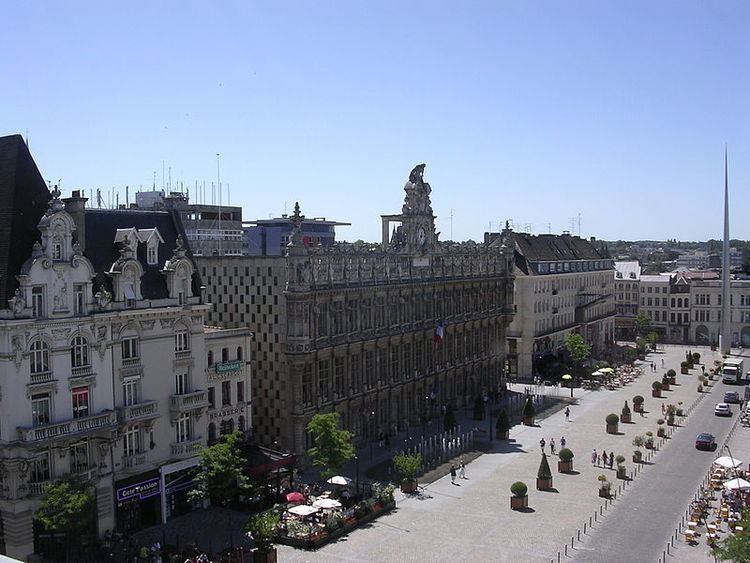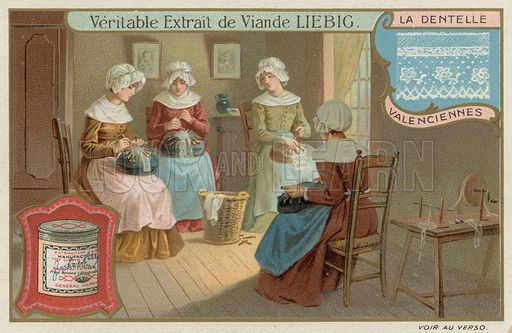Country France Area 41,278 | Region Nord-Pas-de-Calais Mayor Dominique Riquet (PR) | |
Colleges and Universities University of Valenciennes and Hainaut-Cambresis, Supinfocom | ||
Valenciennes ( Dutch: Valencijn, Latin: Valentianae) is a commune in the Nord department in northern France.
Contents
- Map of Valenciennes
- As saintetienne valenciennes fc 30 010214 assevafc resume
- History
- Main sights
- Economy
- References
Map of Valenciennes
It lies on the Scheldt (French: ) river. Although the city and region experienced a steady population decline between 1975 and 1990, it has since rebounded. The 1999 census recorded that the population of the commune of Valenciennes was 41,278, and that of the metropolitan area was 399,677.
As saintetienne valenciennes fc 30 010214 assevafc resume
History

Valenciennes is first mentioned in 693 in a legal document written by Clovis II (Valentiana). In the 843 Treaty of Verdun, it was made a neutral city between Neustria and the Austrasia. Later in the 9th century the region was overrun by the Normans, and in 881 the town passed to them. In 923 it passed to the Duchy of Lower Lotharingia dependent on the Holy Roman Empire. Once the Empire of the Franks was established, the city began to develop, though the archaeological record has still not revealed all it has to reveal about this period. Under the Ottonian emperors, Valenciennes became the centre of marches on the border of the Empire.

In 1008, a terrible famine brought the Plague. According to the local tradition, the Virgin Mary held a cordon around the city which, miraculously, has since protected its people from the disease. Since then, every year at that time, the Valenciennois used to walk around the 14 kilometres (9 miles) road round the town, in what is called the tour of the Holy Cordon. Many Counts succeeded, first as Margraves of Valenciennes and from 1070 as counts of Hainaut.
In 1259 Valencienne was the site of a General Chapter of the Dominican Order at which Thomas Aquinas together with masters Bonushomo Britto, Florentius, Albert, and Peter took part in establishing a ratio studiorum or program of studies for the Dominican Order that featured the study of philosophy as an innovation for those not sufficiently trained to study theology. This innovation initiated the tradition of Dominican scholastic philosophy put into practice, for example, in 1265 at the Orders studium provinciale at the convent of Santa Sabina in Rome, out of which would develop the Pontifical University of Saint Thomas Aquinas, Angelicum
In 1285, the currency of Hainaut was replaced by the currency of France: the French ecu. Valenciennes was full of activity, with numerous corporations, and outside its walls a large number of convents developed, like that of the Dominicans (whose church was excavated by the Valenciennes Archaeological Service in 1989 and 1990).
In the 14th century, the Tower of Dodenne was built by Albert of Bavaria, where even today, the bell is rung in honour of Our Lady of the Holy Cordon. In the 15th century, the County of Hainault, of which Valenciennes is part, was re-attached to Burgundy, losing its autonomy. Valenciennes in this period, however, had several famous sons — the chronicler Georges Chastellain, the poet Jean Molinet, the miniaturist Simon Marmion, the sculptor Pierre du Preau and the goldsmith Jerome de Moyenneville).
Main sights
The Hindenburg Line ran through Valenciennes during World War I, leading to extensive destruction. Valenciennes was again almost completely destroyed during World War II, and has since been rebuilt in concrete.
A few surviving monuments are:
Economy
Valenciennes is historically renowned for its lace. Until the 1970s, the main industries were steel and textiles. Since their decline, reconversion attempts focus mainly on automobile production. In 2001, Toyota built its Western European assembly line for the Toyota Yaris in Valenciennes. Because of this and other changes, the average unemployment in the region is now lower than the national average.
